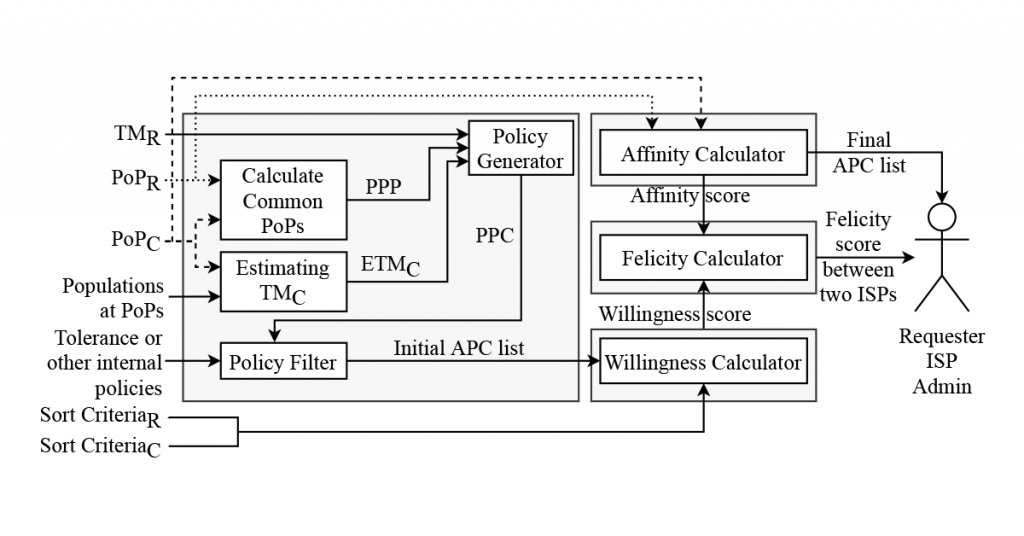
With more than 89,000 Autonomous Systems (ASes) around the world, individual Internet Service Providers (ISPs) can’t have global reachability without collaborating and establishing transit or peering interconnections.
Optimal peer selection is a hard problem and current methodologies are inefficient and require unnecessary manual work. Depending on their network needs, ISPs can choose either bilateral private peering using dedicated physical links, or multilateral public peering using a route server. In either case, network admins typically negotiate peering deals at various face-to-face and now more so, virtual events. In some cases, ISPs start with a ‘trial peering’ period to avoid future tussles.
Meta-Peering, developed by the University of Central Florida, focuses on automating the peer selection process in bilateral agreements and suggests possible Points of Presence (PoPs) according to ISP specific criteria. It breaks down the entire peering process into four phases:
Pre-peering Phase: ISPs advertise their criteria to search for feasible peers.
Peer Selection Phase: ISP administrators meet (either face-to-face or virtually) with potential peers and negotiate their terms.
Establishing BGP Session Phase: Each of the parties deploy BGP rules as per the peering agreement.
Post-Peering Phase: Operators monitor their network performance and evaluate the utility of the peering relation. In this study, we proposed the Meta-Peering framework to make the Peer Selection Phase easier. Figure 1 presents an overview of this framework. It leverages publicly available data and produces a guideline of peering contracts based on requester ISP’s internal policy.

Considering the PoP locations, traffic matrices, and port capacities at common ISP locations, the framework suggests whether the candidate may agree with a particular peering offer or not. We used PeeringDB to identify common PoP locations among the requester and candidate ISPs and used population data to approximate traffic flows using the gravity model.
The model outputs three scores, which relate to different properties of the networks:
| Willingness score | Calculated using the simulated traffic matrix of both ISPs, it represents how willing ISPs are to forming a peering relationship in terms of their traffic flows. |
| Affinity score | Calculated using ISP PoP locations and surrounding population, it represents how regionally diverse the ISPs are in terms of their service coverage. |
| Felicity score | Geometric mean of the willingness and affinity scores, representing the overall feasibility of the peering relation. |
Table 1 — Model scores relating to different properties of potential peering networks.
Using these scores for each ISP, Meta-Peering decides whether two ISPs will be ‘good’ peers and then identifies peering locations which will be beneficial for both ISPs.
We tested our proposed Meta-Peering framework on real-world ISP data in the context of the USA. As part of this initial study, we selected 23 large-scale ISPs and validated our identification of peering results by comparing them to CAIDA data. We were able to successfully identify 85% of the peering pairs from CAIDA with a false-negative percentage of 15%.
Check out the beta version
To source feedback from the networking community and to make this tool available, we have developed a web application and deployed a beta version of it. We are actively working on improving the overall peer recommendation model and will be periodically pushing updates to the web application.
For more information on the project, please refer to our paper and presentation (video and slides) at ANRW 2021 and check out the tool.
Contributors: Prasun Dey and Murat Yuksel
Shahzeb Mustafa is a Research Assistant at the University of Central Florida.
The views expressed by the authors of this blog are their own and do not necessarily reflect the views of APNIC. Please note a Code of Conduct applies to this blog.
